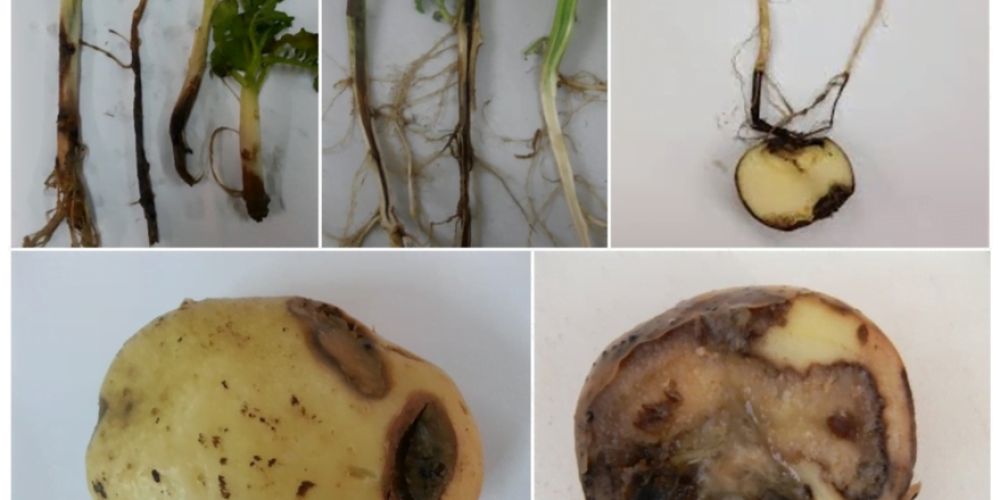Table of contents of the article
ToggleSoft rot is a bacterial disease that affects potato tubers, leading to them rotting and losing their commercial value. This article from the “WORLD OF PLANTS” website provides an explanation of the causes of soft rot disease in potato tubers and ways to prevent it.
Identification of soft rot in potato tubers
- Name of the disease: Soft rot in potatoes
- Scientific name: Pectobacterium carotovorum and Dickeya spp.
- Type of disease: Bacterial pathogen
- Disease family: Pectobacteriaceae
Potato (Solanum tuberosum) plays a vital role in global food security, yet faces major challenges due to many diseases. Soft rot, caused by bacterial pathogen Pectobacterium carotovorum and Dickeya spp., poses a serious threat to potato crops. This article explores the disease life cycle, symptoms, causes, favorable conditions, and effective control strategies for soft rot, providing insights for integrated management.
Life cycle of soft rot in potato tubers
Understanding the life cycle of the bacterial spores that cause soft rot is essential to developing effective management strategies. The spores enter mainly through cuts or natural openings in the potato. Once inside, the bacterium multiplies rapidly, causing tissue disintegration and the characteristic symptoms of soft rot. Infected potatoes and plant debris are potential sources of germs, contributing to the continuation of the disease cycle.
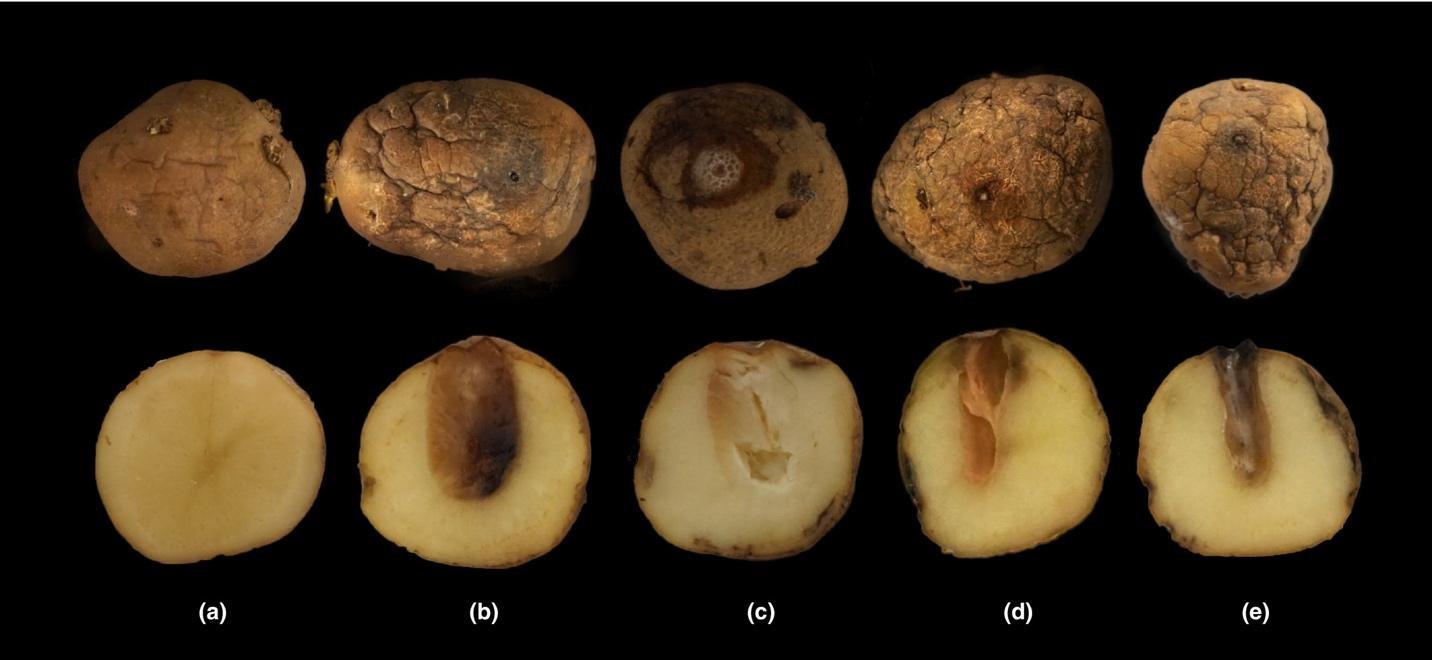
Symptoms of soft rot in potato tubers
Understanding the life cycle of the bacterial spores that cause soft rot is essential to developing effective management strategies. The spores enter mainly through cuts or natural openings in the potato. Once inside, the bacterium multiplies rapidly, causing tissue disintegration and the characteristic symptoms of soft rot. Infected potatoes and plant debris are potential sources of germs, contributing to the continuation of the disease cycle.
Soft rot bacteria thrive in warm, humid conditions, making post-harvest handling and storage critical points of concern. The rapid progression of the disease and its ability to affect seemingly healthy potato grains during the storage period poses significant challenges to potato growers.
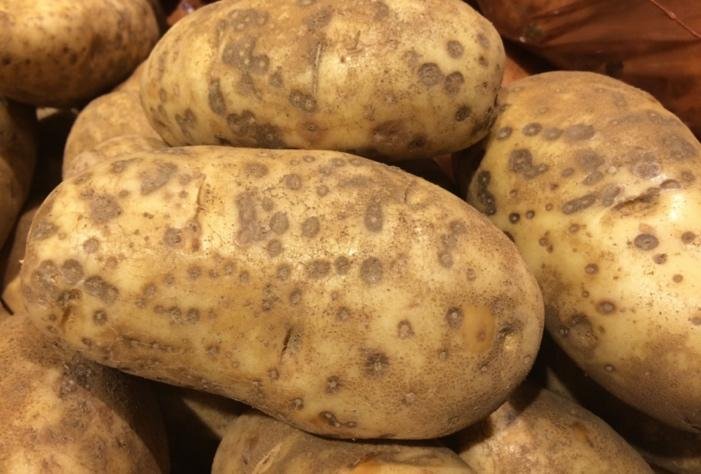
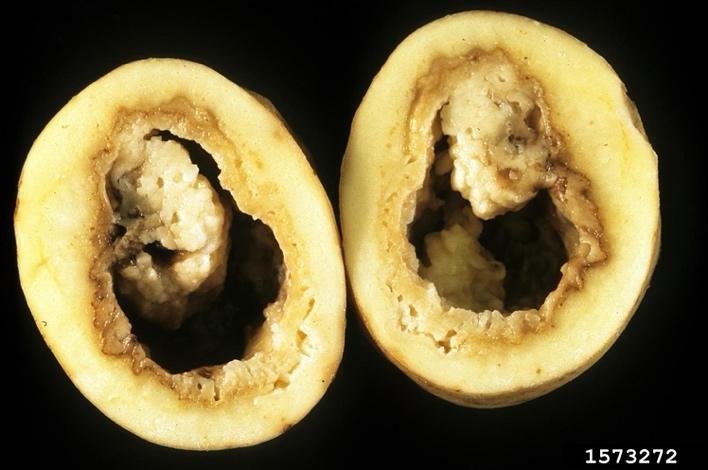
Causes of soft rot disease in potato tubers
The re-emergence of downy mildew as a powerful potato pathogen can be attributed to several factors. Contaminated irrigation water, contaminated equipment, and spore-infected seeds contribute to the introduction and spread of bacteria. Favorable conditions during storage, such as high humidity and lack of ventilation, create ideal environments for bacterial growth and disease development.
Favorable conditions for soft rot disease in potato tubers
Soft rot bacteria react well at warm temperatures (25-30°C) and high humidity, highlighting the need for suitable storage conditions to reduce the risk of developing the disease. Implementing effective prevention measures during the growing period and post-harvest stages is crucial to protect potato crops. The bacterium shows increased activity during warmer weather, making careful monitoring and preventative measures especially vital in late spring and early summer. Proper environmental control during these periods contributes significantly to reducing the susceptibility of potato crops to soft rot.
Losses from soft rot disease in potato tubers
Soft rot poses a major threat to potato crops, resulting in significant economic losses. The disease can cause stored potato kernels to rapidly decompose, rendering them unfit for consumption or processing. Bacteria causing soft rot can also lead to secondary infections, further impacting crop quality and yield.
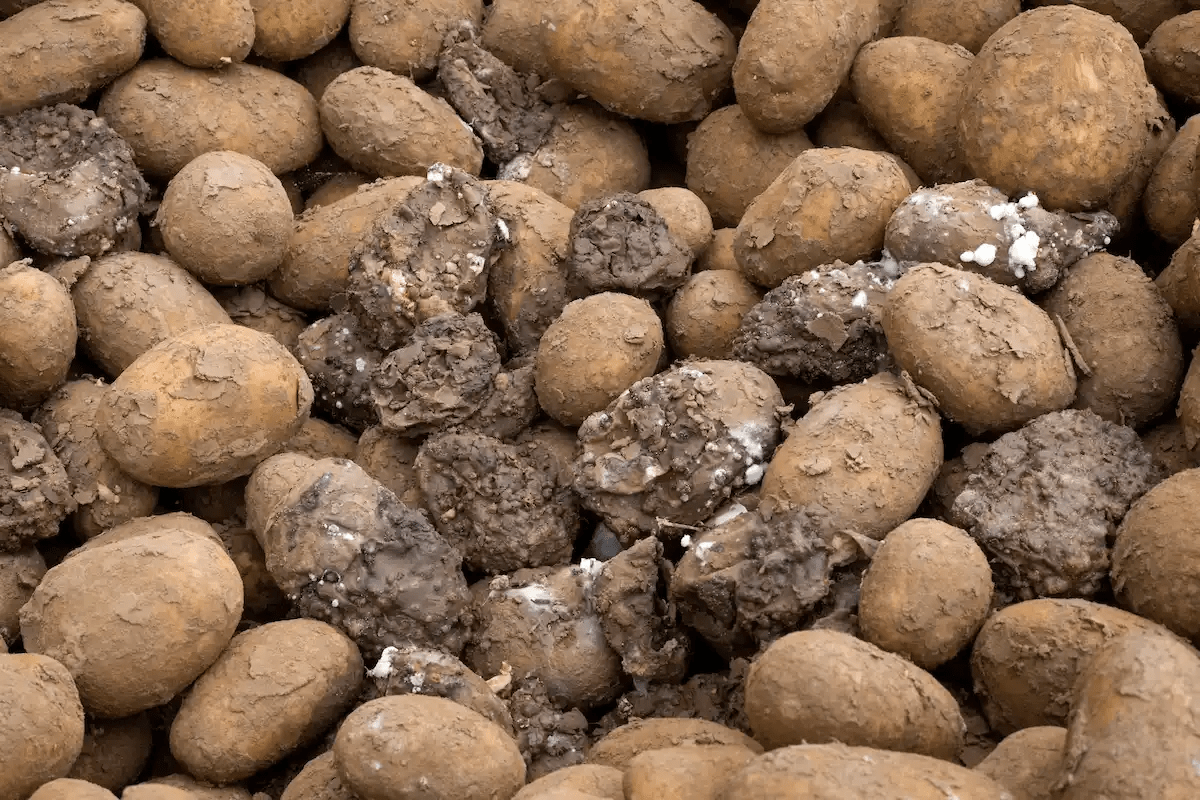
Strategy for controlling soft rot in potato tubers
Effective management of potato soft rot requires a strategic approach, integrating agricultural, chemical and organic practices.
– Agricultural practices: Implementing sound agricultural practices is key. This includes maintaining proper crop rotation, improving plant spacing, and harvesting at the right time to reduce the risk of soft rot. Removing infected plant parts after harvest is crucial to reduce the chances of survival over the winter.
– Chemical control: Using the right chemicals is a vital part of soft rot management. Copper compounds such as copper hydroxide and copper sulphate prove effective against bacteria that cause soft rot. Bactericides such as streptomycin, known for their antibacterial properties, can play a role in controlling soft rot. Careful consideration of application rates and adherence to recommended guidelines is vital to achieve maximum effectiveness and minimize environmental impact.
– Organic control: For those who prefer an organic approach, biofungicides containing beneficial microorganisms such as Bacillus can be incorporated into a comprehensive soft rot management plan. In addition, plant extracts with antimicrobial properties, such as neem oil, have shown effectiveness against the organisms causing soft rot. The balance between preventive measures and biological treatments contributes to an effective and environmentally friendly strategy for caries control.
Preventive measures for soft rot in potato tubers
Effective prevention plays a vital role in mitigating the risk of soft rot in potato crops. Implementing a comprehensive set of preventive measures is crucial to enhance the vigor of potato crops and protect them from the devastating effect of soft rot. Here are some key preventive measures to consider:
- Choosing disease-resistant varieties: Start with a strong foundation when choosing potato varieties known to be resistant to soft rot. Disease-resistant varieties are a strong first line of defense.
- Improve ventilation and drainage: Create an environment that limits the development and spread of soft rot by promoting proper aeration and optimal soil drainage. Adequate ventilation helps reduce conditions conducive to bacterial infection.
- Monitor the field regularly: Make careful checks in the field on a regular basis to immediately identify and remove any plants showing symptoms of soft rot. Early verification is crucial to contain the spread of the disease.
- Crop rotation with non-hosts: Break the disease cycle by practicing crop rotation and moving to non-host crops for two to three years, which reduces the availability of suitable hosts for soft rot pathogens.
- Eliminate host plants: Eliminate any potential hosts in the vicinity of the field, reducing the risk of soft rot recurring. Removing volunteer plants quickly disrupts the pathogen cycle.
- Balanced fertilization practices: Avoid excessive nitrogen fertilization, as this can create conditions that encourage the development of soft rot. Adopt recommended fertilization practices to promote healthy plant growth without compromising resistance.
- Strengthening plants: Incorporate plant hardeners or natural resistance stimulants to enhance potato plants' innate defenses against soft rot. These can include probiotics or extracts of plants known to have antimicrobial properties.
- Balanced fertilization practices: Proper post-harvest storage is crucial to prevent the development of soft rot. Store harvested tubers at low temperatures and ensure good ventilation to reduce the risk of bacterial infection during storage.
- Responsible disposal of plant waste: Responsibly dispose of harvested tubers and plant remains by burying them at least 2 feet deep or using them as animal food. This helps eliminate soft rot recurrence sites.
Adherence to these preventive measures collectively contributes to building a strong defense against soft rot, ensuring the health and productivity of potato crops throughout their growth cycle. Caution, along with these preventive measures, are key to minimizing the impact of this stubborn and devastating bacterial disease.
Conclusion
In conclusion, the persistent threat posed by soft rot to potato production calls for unrelenting attention and effective management. As a constantly present pathogen, control of Pectobacterium carotovorum and Dickeya spp. A comprehensive approach to sustainable control. This article specifically highlighted the importance of caution, early detection, and integrated control.
The potential for soft rot to cause significant losses is a reality that farmers must face. Therefore, collaboration between researchers, farmers and decision-makers becomes crucial to navigate emerging challenges and secure the future of sustainable potato production. By implementing the preventive measures described here, potato growers can strengthen their defenses against this devastating bacterial disease.
As we move forward, staying informed, adopting innovative strategies, and strengthening collective commitment to agricultural resilience will be crucial. Soft rot may persist, but with shared knowledge and collaborative efforts, we can grow potato crops that thrive, ensuring food security and economic well-being for farming communities.
We would like to point out that we, on the World of Plants website, provide you with all the services you need in the world of plants. We provide all farmers and those interested in plants with three main services: -
- Artificial intelligence consulting service to help you identify diseases that affect plants and how to deal with them.
- Blog about plants, plant diseases and care of various crops ... You are currently browsing one of her articles right now.
- An application that provides agricultural consultations to clients, as well as a service for imaging diseases and knowing their treatment for free – Click to download the Android version from Google Play Store، Click to download the IOS version from the Apple App Store.
Sources:
- Charkowski, A. O. (2018). The Soft Root Erwinia. Reference Module in Life Sciences.
- Pérombelon, M. C. M. (2002). Potato diseases caused by soft rot erwinias: an overview of pathogenesis. Plant Pathology, 51(1), 1-12.
- Toth, I. K., van der Wolf, J. M., Saddler, G., Lojkowska, E., & Hélias, V. (2011). Chapter Four - Soft Rot Erwiniae: from genes to genomes. Advances in Applied Microbiology, 76, 1-25.




